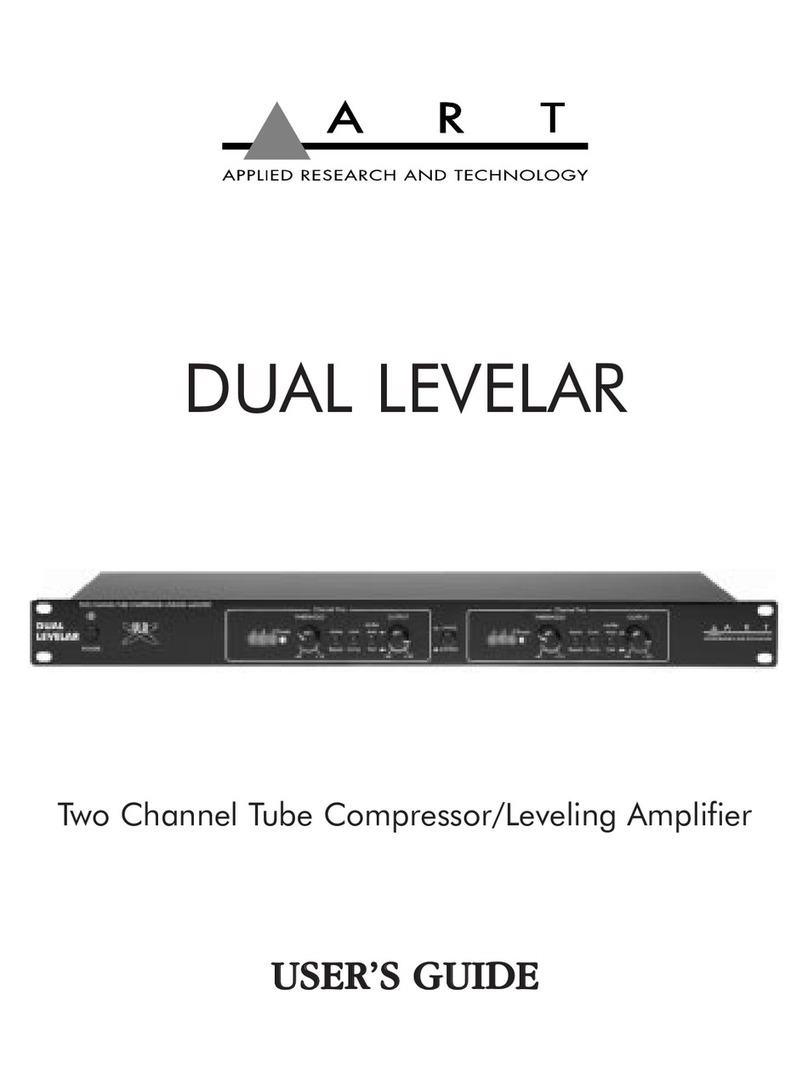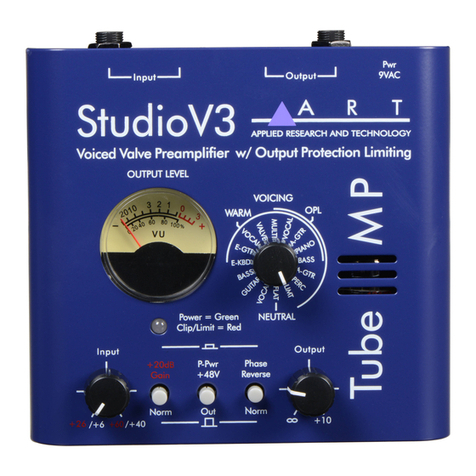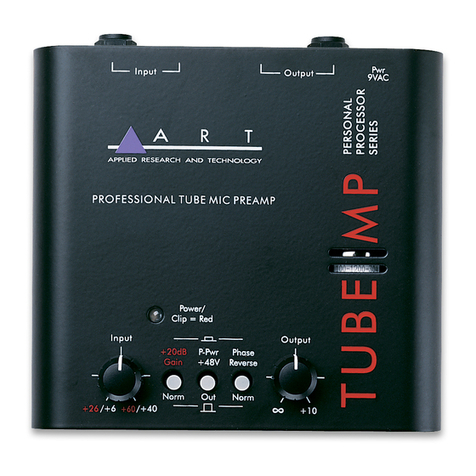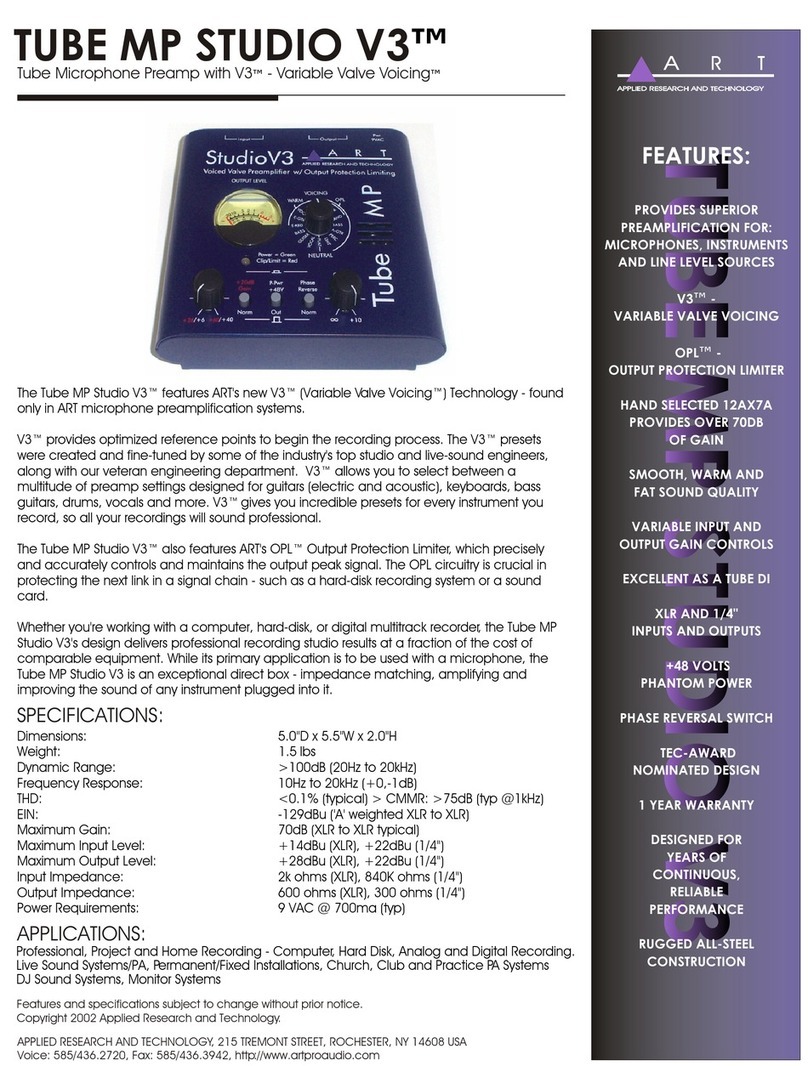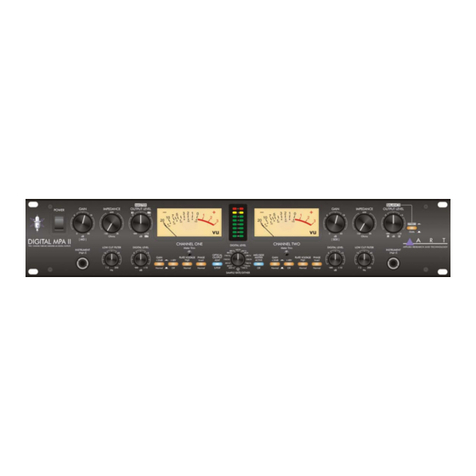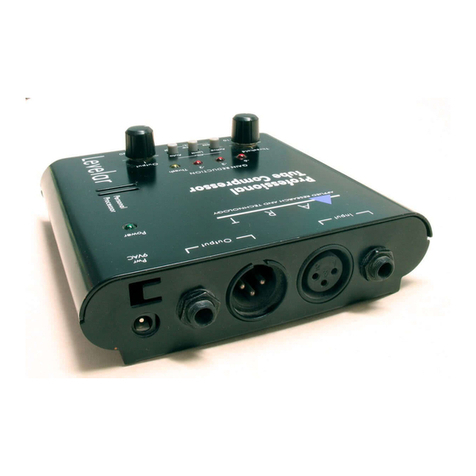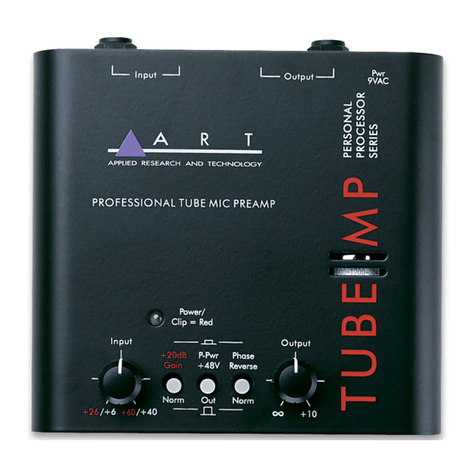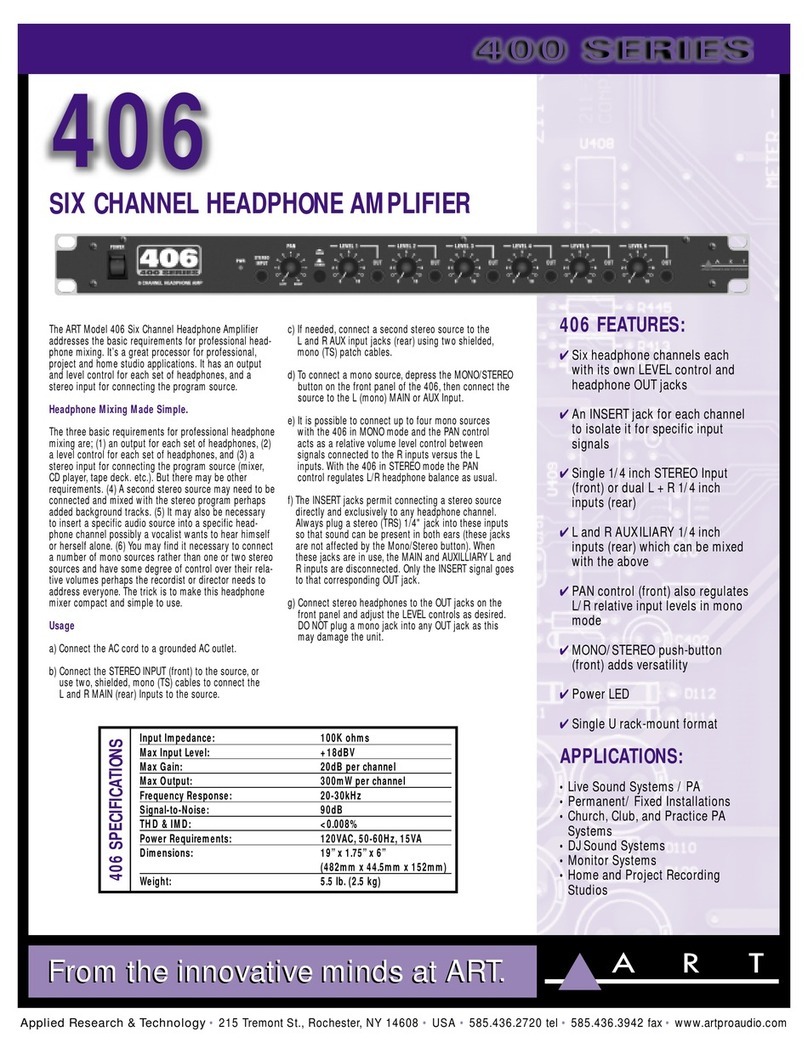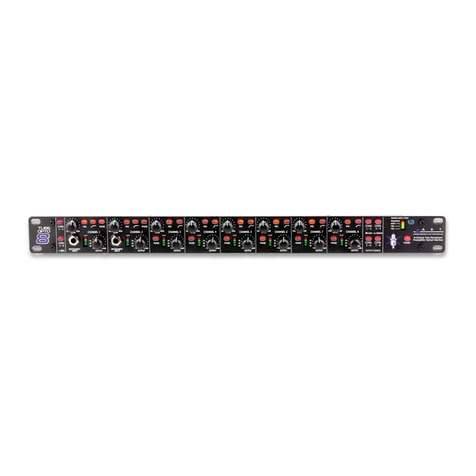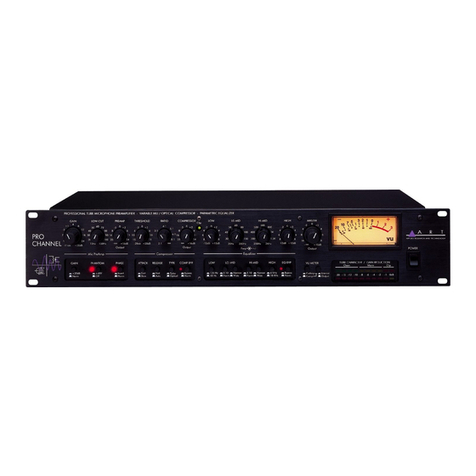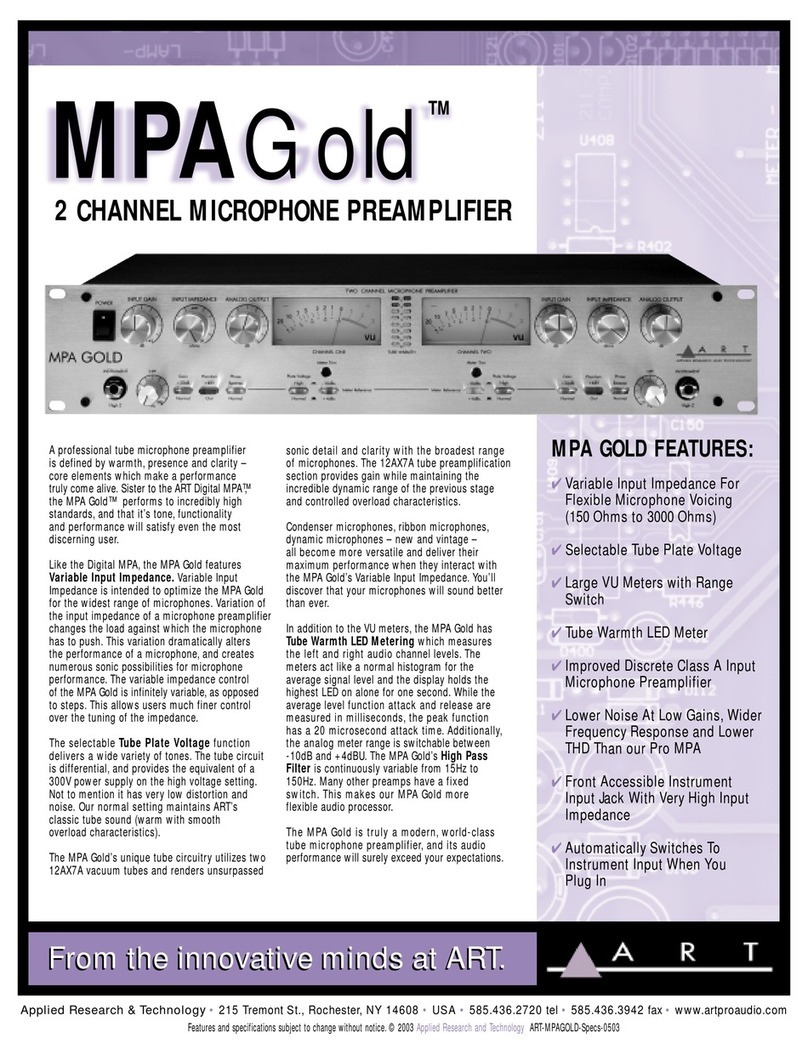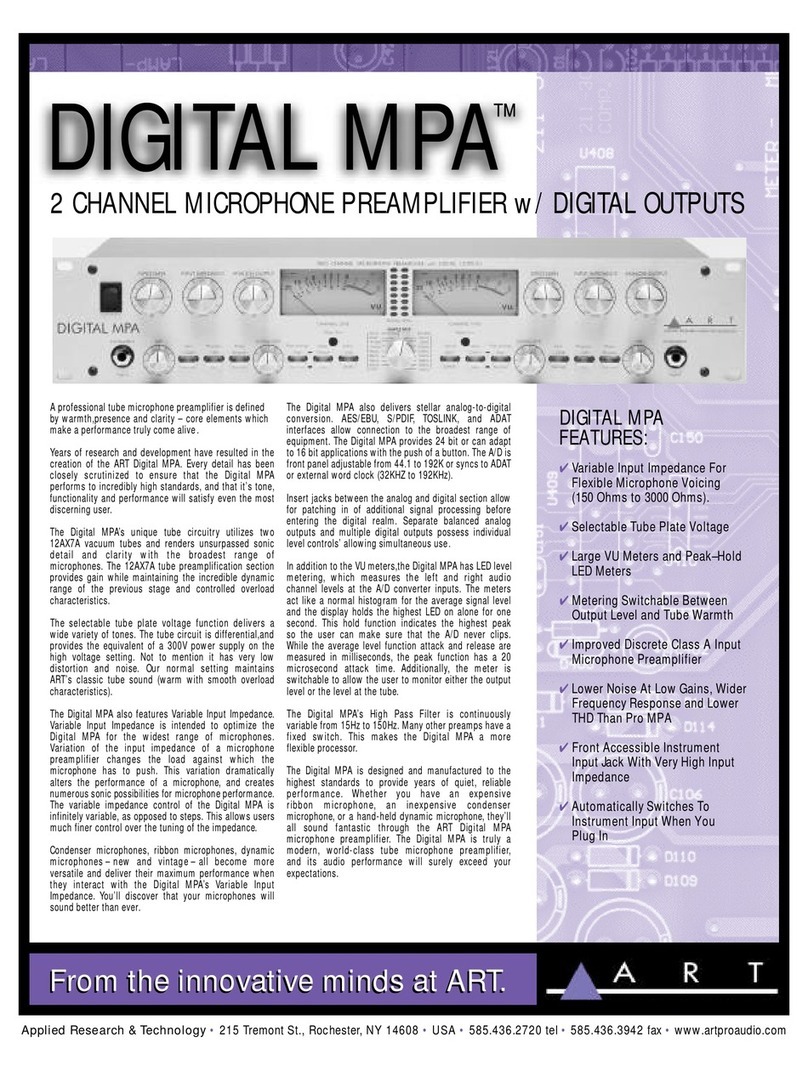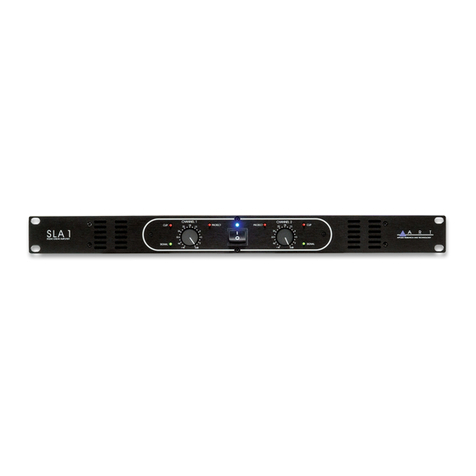
III
PRO CHANNEL II
TUBE PREAMP - OPTO COMPRESSOR - EQ
IMPORTANT SAFETY INSTRUCTIONS – READ FIRST......................................................................................................II
INTRODUCTION.....................................................................................................................................................................1
INSTALLATION......................................................................................................................................................................2
AC Power Hookup..................................................................................................................................................................................2
Analog Audio Connections.....................................................................................................................................................................2
FRONT PANEL CONTROLS and JACKS.............................................................................................................................3
Mic Preamp Controls..............................................................................................................................................................................3
Instrument Input .....................................................................................................................................................................................3
Gain Control...........................................................................................................................................................................................3
Impedance Control.................................................................................................................................................................................3
GAIN Switch...........................................................................................................................................................................................4
Phantom Power Switch ..........................................................................................................................................................................4
Invert Switch...........................................................................................................................................................................................4
Low Cut Control......................................................................................................................................................................................4
Preamp Output Control...........................................................................................................................................................................4
Tube Voltage Switch ..............................................................................................................................................................................5
Compressor Controls .............................................................................................................................................................................6
Threshold Control...................................................................................................................................................................................6
Ratio Control ..........................................................................................................................................................................................6
Attack Control.........................................................................................................................................................................................7
Release Control......................................................................................................................................................................................7
Compressor Output Control....................................................................................................................................................................7
Gain Reduction LED Meter.....................................................................................................................................................................8
Semi-Parametric EQ ..............................................................................................................................................................................8
EQ Bypass Switch..................................................................................................................................................................................9
CLIP LED ...............................................................................................................................................................................................9
Master Output Control............................................................................................................................................................................9
Output Meters.......................................................................................................................................................................................10
VU Meter Switches...............................................................................................................................................................................10
REAR PANEL CONNECTIONS...........................................................................................................................................11
INPUT Jack..........................................................................................................................................................................................11
PREAMP OUT Jack .............................................................................................................................................................................11
COMP IN Jack......................................................................................................................................................................................12
COMP OUT Jack..................................................................................................................................................................................12
EQ IN Jack...........................................................................................................................................................................................12
OUTPUT Jacks ....................................................................................................................................................................................12
OUTPUT LEVEL Switch.......................................................................................................................................................................12
APPLICATIONS....................................................................................................................................................................13
Bypassing Components Of The Pro Channel II....................................................................................................................................13
Optimizing The Preamp For Lowest Noise...........................................................................................................................................13
WARRANTY INFORMATION...............................................................................................................................................14
SERVICE...............................................................................................................................................................................27
SPECIFICATIONS................................................................................................................................................................28
LIST OF FIGURES
FIGURE 1 – Preamp section...................................................................................................................................................5
FIGURE 2 – Compressor Section...........................................................................................................................................6
FIGURE 3 – Equalizer Section................................................................................................................................................8
FIGURE 4 – Signal Flow Block Diagram ................................................................................................................................9
FIGURE 5 – Output Section..................................................................................................................................................10
FIGURE 6 – Rear Jacks........................................................................................................................................................11
